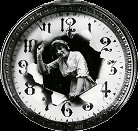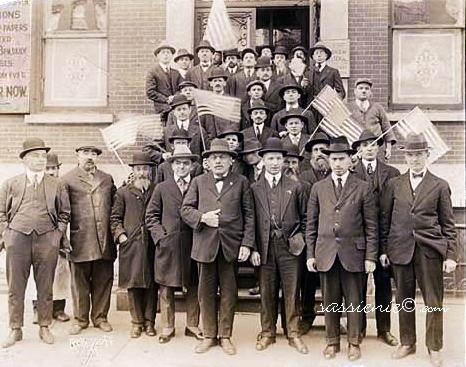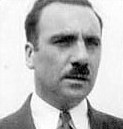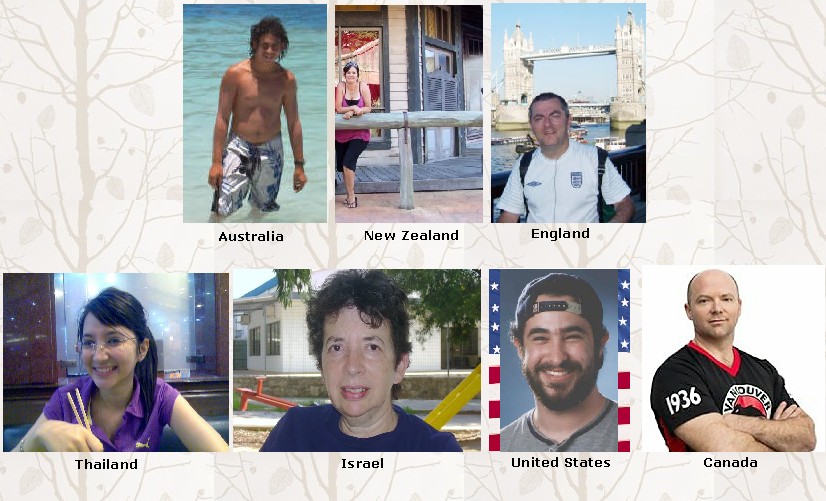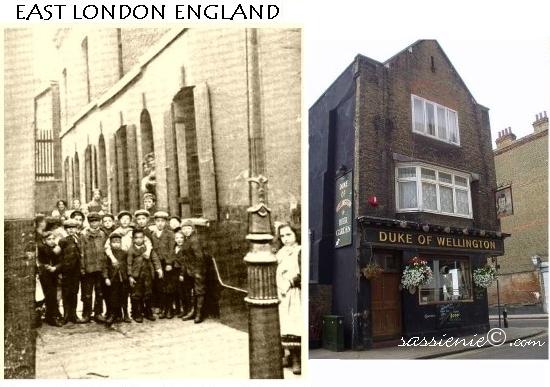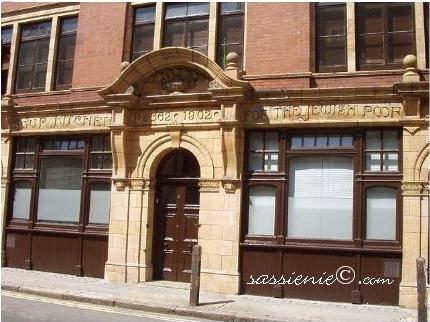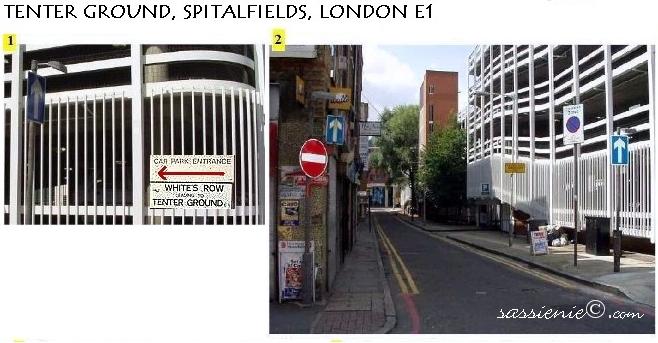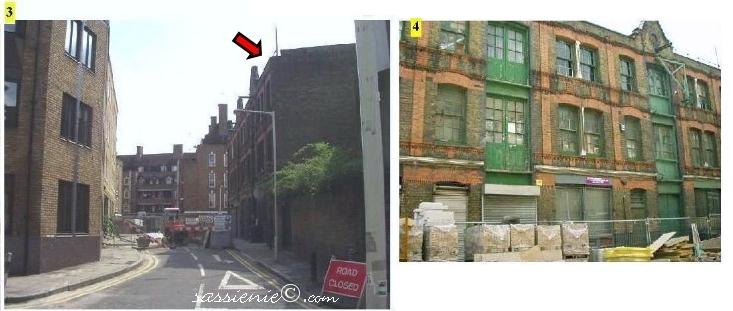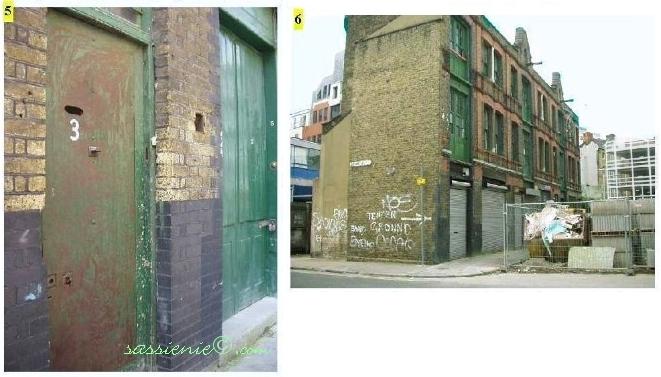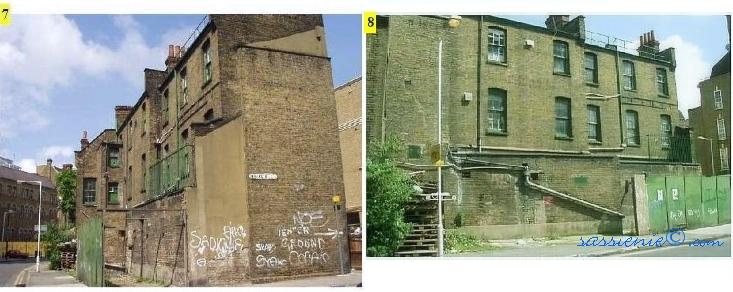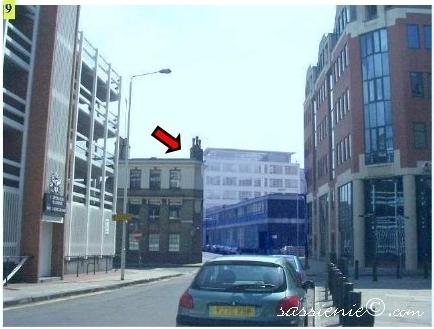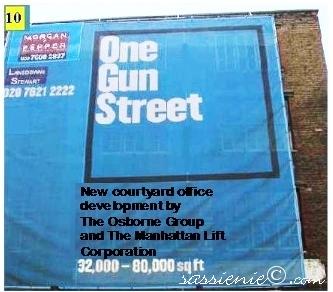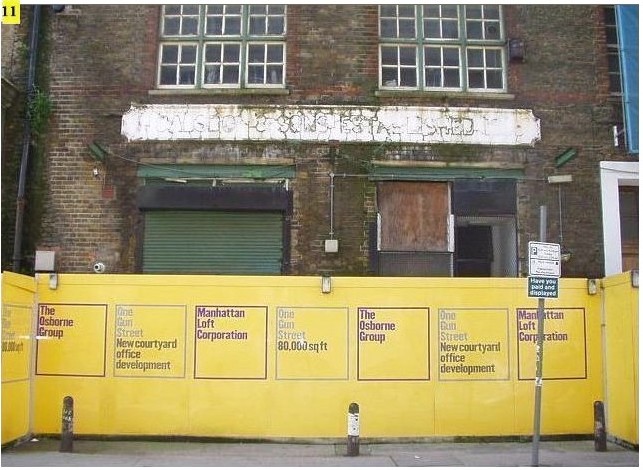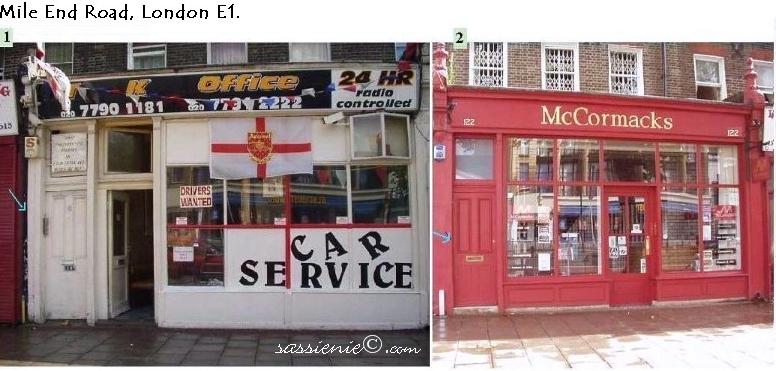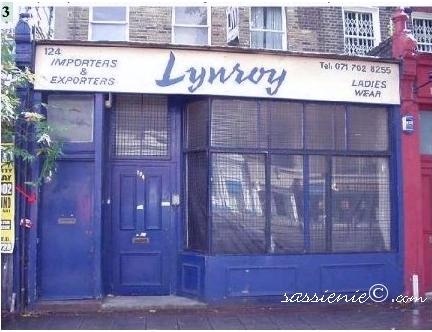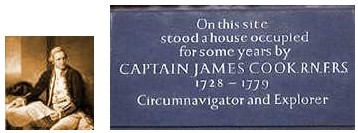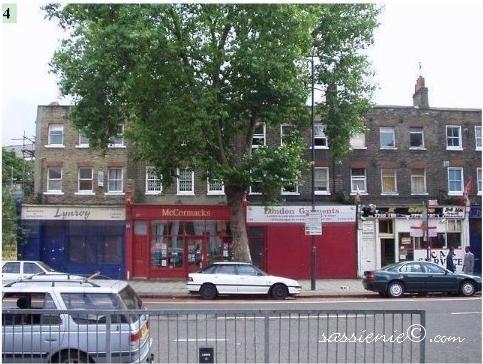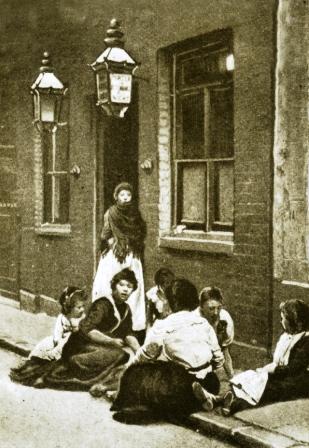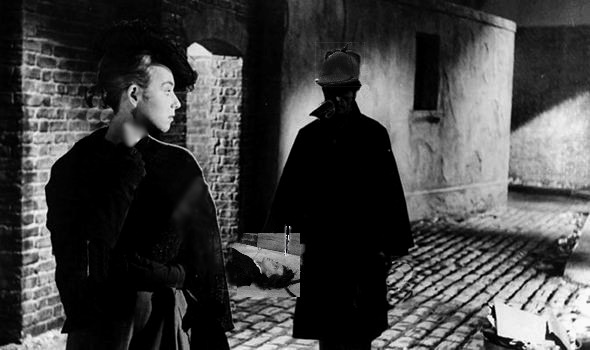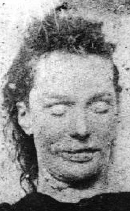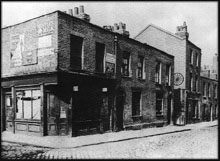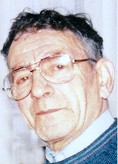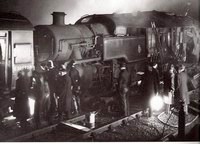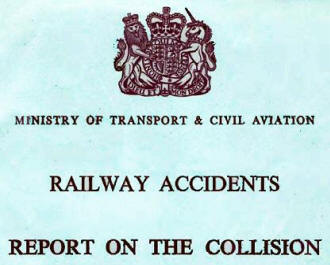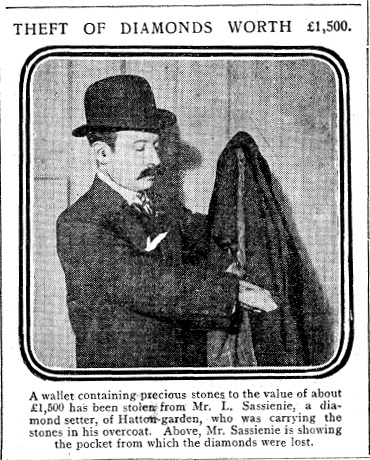|
The Complete Family History - Continued Pages 1 2 page 2 of 2
|
|
From London, England to New York, USA
During the late nineteenth century and early twentieth century many of our
ancestors went to America from East London, England for the sole purpose of
doing business or getting an education for their children in one of New York’s
colleges. For some their aim was once this was accomplished they would return to England
and prosper, whilst others risked everything to travel and settle permanently in
America, selling all of whatever assets they had in hope of starting a new
life. After entering America they wrote letters back to relatives about their
lifestyles in the United States. Soon their relatives came to America to join
them. They came because America was portrayed to be the land of opportunity;
others came because they were encouraged by exaggerated stories of abundant job
opportunities.
Abram (Alfred) Sasiene
Residence 1911: 118 Mile End Road, Stepney, London E1, England. Immigrated to America on May 19, 1924. Arrived on the Leviathan at the port of New York. Lived at :192 Beach, 119th St, Rockaway beach, New York, USA. Worked for Bernard Brindze at 114 East 129th Street, NYC, USA. Was naturalized on June 14, 1938 in Rockaway Park, Queens County, New York, USA. Alfred Sasiene was a house painter in NY and also performed in vaudeville too for a time and was a part time clown and showman.
Eventually the Sasieni families arrived in New York. But before they would qualify for
US citizenship they had to pass through
Ellis Island just off the mainland of New York, an immigrant holding centre
where immigration officials would determine whether the applicants would become
US citizens or not.
Video - Immigration Through Ellis Island, Award Winning Documentary Video Film
Take a look at this interesting video, filmed in a fish market - Jewish New York City 1903
This video is a view as to how so many Jewish Immigrants began their lives in America, the so-called land of opportunity during the early part of the twentieth century.
Sassienie Family Tree
|
The Great Sasieni During the mid nineteenth century
up to the early part of the twentieth century all the Sasieni family members
would have been living within and around Spitalfields of the East End of London,
England. Then eventually after a period of 50 years most progressed and moved to
more prominent areas within London, other cities in England and some to New York in the United
States. All went their separate ways, probably between 1905 and 1915, mainly due
to marriages and emigration into the United States.
Sassienie Family Tree
|
Homes Of Our Immigrant Ancestors Homes of the first & second-generation Sasieni families in East London, England. Tenterground, Spitalfields & Mile End Road, London E1. Site of Captain Cook`s cottage, tenement block from 1901 with residents, the original local pub and Photos of surviving buildings taken 10th August 2002.
First photo: Tenement building 1901 – Tenter Ground
Street. It is possible that some children in the
photograph are Sasieni family members.
Third Photo: Soup kitchen and temporary accommodation for the Jewish poor in Brune Street, Spitalfields. The building now rented out as office units. Facility mainly for the benefit of East European Immigrants being placed into the area during the later part of the 19th century. There are no records of Sasieni family members receiving or donating to this soup kitchen.
Photos nos 1 and 2: Entrance into Whites Row off Commercial Street, leading to the Tenter Ground. Whites Row showing car park on right.
Photo no 3: Entrance to
Tenter Ground. Red arrow points to the now (2002) only surviving building from
1878. Home of the original Dutch immigrant Sasieni families.
Photo no 5: The original
wood and iron front door entrances from 1878 still exist.
Photo no 7: Side and rear
view of building going into Bell Lane.
Photo no 9: The last stand. Late 20th century and mid 19th century together. This is Whites Row and side view of the Tenter Ground block.
This part of the building has been revamped,
perhaps because this side is in sight of office workers and tourists.
Photo
no 1: At the beginning of the 20th century, Morris
(Moses) Sassienie moved from the Tenter Ground to this
tenement flat: 118 Mile End Road, Stepney Green, London
E.1 with his children. Building still has original
front. Many family members were born in these premises,
including Morris Sidney Sassienie in 1922
Photo no 3: 124 Mile End Road, Stepney Green, London E.1 became the residence of Doris Sassienie, her husband Alec Stern, children Farley Stern (later Farley David) and Steven Stern. On the first floor resided, Sarah (Sally) Sassienie with her children, Valerie, Lesley Alan and Jacqueline.
Photo no 4: A wider view of these early 19th century
properties. In the mid 1970s these buildings were no
longer considered suitable for residential use. The
compactness of the tenements prohibited any
modernisation, expansion or advancement to the
properties. The tenants progressed to more modern
accommodations, some within the district, others moved
away to other locations, after which the city council
decided to demolish and rebuild the whole area. Similar
buildings to the left of the picture were demolished; a
few tenements remained becoming listed as historic
buildings, hence are still there (2002) today.
Sassienie Family Tree |
JACK THE
RIPPER
Nathan Shine According to Nathan
Shine’s own oral statement first told to his parents and later his children, on
30th September 1888, Nathan Shine alleges that he left a working mans social
club in Commercial Street, Whitechapel, London E1, England heading for his home. On
turning into Berner Street from Commercial Street at approx 1.00am he saw a man
holding a large narrow bladed knife standing over a woman who was lying on the
ground, motionless.
The man stared straight into the face of Nathan and then turned and made a swift
retreat from the scene. At the same time, Nathan, in fear of his life, ran away in the opposite
direction and took another route to his home. It appears that Nathan disturbed
the man moments after the woman had been killed. Nathan
Shine told of his experience to his parents but the episode was not mentioned
again for many years, as for fears of reprisals, either from the murderer or
from anti Semitic gangs. ELIZABETH STRIDE
Elizabeth Stride was born during the year 1843 in Sweden. She came to London, England in 1856 and worked
as a prostitute in the Whitechapel district.
Video - Jack the Ripper murder locations - then and now
Video - Grave of Elizabeth Stride, East London Cemetery and probably buried beneath the grave is locked the secret as to the true identity of Jack the Ripper.
Sassienie Family Tree |
|
Signalman Morris
Sidney Sassienie
The Dagenham East rail crash was a
railway accident on the London, Tilbury and Southend Railway line of British
Railways that occurred at Dagenham, Essex, England. The accident took place at
around 19:34 on 30 January 1958 and was a rear-end collision of two late-running
trains in foggy conditions at Dagenham East station. The accident occurred after
one train had passed signals at danger (red) due to a driver's error. Ten people were
killed in the accident and 89 injured.
Video - Train crash scene from the film: Train Of Events (1949)
In memory of
those who were involved, survived and died in the
Dagenham East Train Crash Disaster - 30th January 1958
Sassienie Family
Tree
Offence: Theft > receiving
Trial
of SHINE, Nathaniel (43, job buyer)
SHINE,
Nathaniel (43, job buyer),
feloniously receiving three pipes and one cigarette
holder, the goods of Walter Scales, well noting them to
have been stolen. Mr. A.H. Forbes prosecuted; Mr.
Salkeld Green defended.
JOHN
WILLIAM VINCENT,
salesman to Walter Scoles, carrying on business as J.
Wisbey and Co., 77, Houndsditch. The pipes shown to me
come from our firm; they are worth 8shillings or
9shillings. They are not a job lot. We deal in the other
articles shown to me. We are continually losing goods
answering this description.
CHARLES
WHITE.
On November 21, I was employed by Wisbey's as assistant
salesman. I think I first met prisoner about seven weeks
ago in London Wall. We passed the time of day and spoke
business. He said if I could get hold of anything and
took it round to his house be would buy it of me. I have
seen him at Wisbey's. I do not know if he has seen me.
He knew where I was employed. These brushes came from
Wisbey's. I took them to Mr. Shine's tike night before I
was taken into custody. He met me in. Barnsbury. I sold
him the pipes at dinner-time. To the beat of my belief
we had three deals; they came to 23 shillings; I
received only 10 shillings. They were not job lots
Prisoner never asked if they were job lots.
Cross-examined. Wisbey's is a very busy place. I have
seen prisoner in and out nearly all the three yean I was
there. I had never spoken or nodded to him. I could not
tell you if I had a conversation with him about his
chest when I met him in London Wall. I would not swear
he did not say he was suffering from consumption. He
said he wanted to go to a hospital to get treatment. I
said, "I am a life governor of a hospital myself and can
get you a ticket." I gave him my address and told him to
come to my house for a ticket. I believe I took the
ticket when I took the thongs over. I do not think he
asked me what I did for a living. I did not say, "I deal
in job goods of any description." I may have mentioned
pianos. I was a dealer in pianos I had a bag containing
some goods. I could not tell you if I said to him, "I
have got a few odds and ends here; could you do with
them?" I night have done. I produced some side-combs,
dressing-combs, a few purses and mouth-organs. I said,
"These are odds and ends; give me 12shillings for them."
He wad, "I will give 10 shillings."
Detective-constable FRENCH,
City Police. On November 21, I arrested Charles White on
a charge of stealing property belonging to his employer.
He made a communication to me, in consequence of which I
accompanied him to Bell Lane, where he pointed out
prisoner. I said to prisoner, "I am a police officer,
and I am going to arrest you with this man White for
stealing and receiving some pipes, a cigarette, 1 tube,
and other articles, the property of Messrs. Wisbey."
Prisoner said, "You have made a mistakes" He then said,
"I did buy some pipes in the dinner hour, and if you
like to come round home I will show them to you." I went
to his home, where the pipes were produced and the
cigarette-holder. I searched the house and found various
other property. (Witness identified the pipes.)
Cross-examined. When the pipes were found he said, "I am
a job buyer; I bought some pipes and combs from this
man," pointing to White, "who I thought was a job buyer
also."
(Defence)
NATHANIEL SHINE
(prisoner, on oath). I live at 5, Palmer Street. I have
been a job buyer for 20 years. I have been doing
business with Wisbey's over ten years. I have all the
receipt. I am suffering from consumption. I have been in
four hospitals. About six weeks before my arrest White
approached me in London Wall. He said, "Hullo." I looked
at him for a minute. I had seen him once or twice at
Wisbey's; I thought he was a traveller. He said, "How
are—you going on" I said, "I don't feel well, I am going
to get a letter." He said, "l am life governor of a
hospital; come to 26, Offord Road, and I will give you a
letter." I did, and was glad to get the letter. At his
house he asked me what I was doing. I said, "Buying job
lots, what are you doing?" He said, "I have been working
for a firm about 15 yean in pianos "; did not mention
any name. I thought he was gentlemen; he had a very nice
place. He produced a brown bag containing these pipes
and other things. He asked 12 shillings. I did not ask
him where he got them from. I said, "I will allow you
10shillings for them." I kept them for three weeks; I
was trying to save the stuff for Christmas so as to buy
the children some clothes. Three weeks following he came
to my house. He asked for 12 shillings. I said, "I will
give you 10 shillings in the dinner hour." The day
following he sold me the pipes and; cigarette holder. He
asked 4 shillings; I gave him 3 shillings. You can buy
them as 10 shillings,
12 shillings and 15 shillings a dozen in any shop in Houndsditch. I have been carrying
on business as a job buyer 20 yean in London.
Cross-examined. I was not frequently in Wisbey's during
the two-months before November 21. I might go in now and
again, and the governor would say, "Shine, I have not
got anything for you to-day." I never saw White in the
basement. Job buyers do not ask where the goods come
from. I thought that White was a traveller. I did not
know he was employed at Wisbey's or I should not have
bought them. How could I think he worked there when I
met him in London Wall? White admitted at the station,
that be never informed me they were stolen.
Verdict, Not guilty.
It
is alleged that Nathan Shine witnessed a Jack the Ripper
murder, perhaps a suspect and may have been unjustly and
discriminatorily victimised by the City of London and
Westminster police for this reason.
Original Old Bailey court record
Click on image to view
full size
Leon Sassienie Son
of Moses (Moppy) Sassienie & Yotje (Julia) Spier
British newspaper clipping from 1908
A wallet containing precious stones to the value of
about £1,500 has been stolen from Mr. L. Sassienie, a diamond setter, of Hatton garden, who was carrying the stones in his
overcoat.
Above, Mr. Sassienie is showing the pocket from which
the diamonds were lost.
In 1908, £1500 was the
equivalent of £151000 today (2025). Outcome of this case, unknown.
Branch
three family member, husband of
Rachel (Rae) Akker
Witness > Leon Sassienie
Offence: Breaking Peace > wounding
Verdict: Guilty
CHANDLER, Frederick (38, acrobat), feloniously
wounding Frederick Harris with intent to do him
grievous bodily harm; feloniously throwing corrosive
fluid at and upon Frederick Harris with intent to
disable him and to do him grievous bodily harm and
applying to him a certain destructive substance, with
intent to disable him; stealing one coat, the goods of
Margaret Sohaack.
Mr. Hardy prosecuted.
The first indictment was proceeded with.
FREDERICK HARRIS, jeweler. On March 6, I received this
letter dated March 5 and signed "Fred Chandler," stating
"Dear Harris.—I have just returned to town and want a
stone, about 2 carats, white. If you can manage to call
at my place at lunch time, about 12.30, I should be
obliged. "I went to 9 Duchess Street, the address on the
letter, and asked for Mr. Chandler; I had not known him
before. I was shown upstairs and saw his wife. After
about five minutes prisoner came in. He said, "You are
not the man I meant, but anyhow, let me have a look at
what you have got." I showed him some jewellery and he
selected about a dozen articles worth £199. There were
two brooches; one had some stones missing, which he
wanted replaced, and one he wanted made into another
article of jewellery. He asked me to return at 3 p.m.
and he would have the money, which had come from Sydney,
ready. I returned at that time, and he said he had been
to his bank and he expected a messenger from there with
the money. I waited till five, and I said I would not
wait any longer and offered to go to the bank with him.
I went with him to Oxford Street, where it was supposed
to be; I think he said it was the London and
Westminster. When he got to Oxford Street he said, "It
is rather late now. If you will call at my flat tomorrow
morning at 11 o'clock I will have the money waiting for
you." On the next day, April 7, I called there at that
time and saw his wife. Prisoner arrived about two or
three minutes afterwards. I asked him if he had got the
money from his bank, and he said, "Yes; everything was
all right." He went into the bedroom. I was looking out
of the dining-room window when I received a terrible
smash on the head from the back. I tried to smash the
window. He squirted ammonia in my face. He said to his
wife, who was sitting down, "Run!" She ran out and he
followed her. I collected my goods and gave chase. I had
to give up and got into a taxi and told the driver to
drive to the nearest doctor. On arriving there the
doctor said I was reeking with ammonia. I told him I had
been assaulted, and he went for a policeman. A constable
came when I was bathing my head and I went with him to
Duchess Street, where I saw prisoner. He said to me,
"Harris, you won't charge me, will you, after all these
years I have known you?" I said, "I have never seen you
in my life until yesterday for the first time." He said,
"I am sorry. It was a sudden impulse.' He said nothing
about my having assaulted his wife; the first time I
heard the suggestion was at the station.
Cross-examined by prisoner. I am the son of Mr. Harris,
jeweller, of Houndsditch. I did not see you in Hatton
Garden five months ago and offer you a pearl pin. I may
have bought a pearl pin at that time. I bought one from
Mr. Leicester. I did not meet you at the corner of
Wardour Street four months ago and show you a diamond
ring which I valued at £38 10s; I did not have a ring
weighing 3 1/2 carats at that time; I had one weighing 1
1/4 carats at £36 a carat. I have been to a Mr. Marks to
buy a ring, but I did not go with you; I offered to buy
a ring that was marked £60 and weighing about 2 1/2
carats. I tried to sell a Mr. Green a pearl pin; I
offered one for £9 10s and said I would give £9 Hack for
it, but we did not do any business. I never met you the
day before you wrote to me. You did not throw the
ginger-beer bottle at me; you hit me with it. I was not
sitting down at the time. Neither of you attempted to
touch my bag containing the jewellery. I did not pick up
the India rubber bottle and throw it at you as you were
going down the stairs. When I looked through the
jewellery at the station everything was all right. I do
not remember your saying to me afterwards, "You had
better consider before you charge me." or I told the
doctor at the station that I felt all right and that I
was only a bit shaken. I did not say at the police court
that I was not sure if you had hit me. It was three days
before I was able to go back to work. I did not tell
your landlord that you were a friend of mine.
THOMAS ROSE , divisional surgeon. At 12.15 p.m. on March
7, I examined the prosecutor. He was suffering from a
contused wound on the right side of the head; it was H
shaped. He also had a scratch on the right side of the
nose, which might have been caused by the nail. His
tongue and the inside of his lower lip were acutely
inflamed, caused by some corrosive fluid. This
ginger-beer bottle (produced) might have caused the
wound on the head. The green bottle contains strong
fluid of ammonia, and this syringe (Exhibit 3) smells
very strongly of ammonia. I could smell it on the
prosecutor.
To prisoner. I do not remember his saying, "I feel all
right, but a bit upset." He has not been permanently
injured. (To the Jury.) By experimenting I find the
syringe can squirt as much as 18 ft.
Police-constable JOHN WELSBY, 439 D. On March 7, I saw
prisoner running across Woburn Place: I gave chase and
caught him. There was blood on his face and collar and
he had no hat on. I asked him what he was running for
and he said, "I have had a row with a friend of mine and
I hit him with a bottle. I do not think I hurt him. I
hope I have not hurt him as much as I think I have. "I
asked him where it occurred, and he said, "At 9 Duchess
Street." I accompanied him there. I asked the boy who
came to the door where the man was that had been hit and
he said he had gone to the doctor. I sent another police
constable to find where he had prone to, and I went with
prisoner to the first floor front room. Underneath a
chair, behind the door, I found this ginger-beer bottle;
there is a piece knocked off it. I said to him, "What's
this?" and he said, "That's what I hit him with." I
walked to the door, and noticed on the bend of the
staircase this syringe. The boy brought it up at my
request. I smelt it, and it was so strong that I turned
my head away. Prisoner snatched it out of my hand and
said, "That is liquid I use." He squirted the contents
on the carpet; they smelt like ammonia. I took that from
him. He said, "What would you do, constable, if he
assaulted your wife?" I made no reply. Prosecutor then
arrived and said he would charge him. On the way to the
station prisoner said, "I have lost a pocket-book with
£200 in it." I told him to tell that to the inspector. A
little way on he said, "Can I charge him with assaulting
my wife as well?" I made no reply. At the station when
charged he made no reply. He did not charge prosecutor
with assaulting his wife, and so far as I am concerned
he never gave any further information about the £200
that he said had been lost.
To prisoner. I do not remember you looking round when
you were running and then stopping and walking towards
me; you ran round a water-van to avoid me. I do not
remember your saying when the syringe was found, "That
is what Harris threw at me." I took down everything you
said. When you squirted the ammonia out you never said
anything about using it for clothes. The statements you
made in the house I wrote down at the time; those you
made on the way to the station I wrote down at the
station before you were charged.
JACOB WILLIAM PEWY . I live at 9, Duchess Street,
where I let lodgings. On March 4 prisoner came with his
wife and took a sitting and bedroom at £2 5s. a week. He
paid 10s. deposit. He brought no luggage; they said that
would follow. Nothing came when they were there. On
March 6 I saw prosecutor leaving the premises. I
followed him.
To prisoner. I know nothing about the advertisement
offering £40 reward for 5 mill notes lost near Duchess
Street. I asked prosecutor if he was doing any business
with you, and he said, "No; he is a friend of mine."
Detective-sergeant BEX. About 12 noon on March 7, I saw
prisoner at the Tottenham Court Road Police Station. I
asked him if he wished to give me any information about
the loss of his money to enable me to try and trace it
for him. He said, "I will give all the information to my
solicitor." He had a solicitor representing him at the
police court. I went to 9 Duchess Street, where, in his
bedroom, I found this green bottle, containing a small
quantity of ammonia and this funnel, which is made to
fit the syringe.
(Defence.)
LIONEL GREEN jeweler, 36 Wardour Street. (To prisoner.)
On December 29 you bought a wedding-ring from me. A week
before I believe Mr. Harris called at my shop to look at
single-stone ring. I believe he showed me a ring he had
and some pearls. He offered a customer in my shop a
pearl weighing six grains for £9 10s and offered to give
£9 for it. I did no business with him. I believe you
were in the shop at the same time; you looked at the
ring I was showing to Mr. Harris at the same time. I
think he showed you a large stone as well. (To the
Court.) I can only say that at that time Harris and
prisoner were together; I cannot say if they came in
together.
Cross-examined. I have been sentenced to 12 months' for
receiving stolen property.
LEON SASSIENIE , working jeweler, 16 Hatton Garden. (To
prisoner) I have known you about 12 months. I have done
several jobs for you; I have done two or three things to
your design. I have seen you several times in Hatton
Garden.
(Wednesday, April 24.)
NELLIE ROBERTS, I am the wife of the prisoner, whose
name is Roberts. On the day of the assault prisoner
opened a bottle of ginger-beer for me. He went out at
about 11 a.m. Prosecutor called and was showing me some
jewellery when prisoner returned. As the door opened I
was handing prosecutor back a hairpin when the prisoner
attacked him. I did not see the assault, but became
frightened and ran out of the room. On the previous
Tuesday I bought prisoner three penny worth of ammonia
to clean some clothes; he said he had broken the bottle
and he put the ammonia in an India rubber bottle,
filling it with water. Prisoner is jealous and
irritable.
Cross-examined. I was married to prisoner about four
months ago. We then lived for a month in Tollington
Square under the name of Ford; this was at my request.
We then went to 9 Duchy Street in the name of Chandler.
Prisoner told me he had lost a pocket-book containing
£200 and that a £50 note had been taken from his coat. I
do not know anything about it, or whether he has
recovered it, or given information to the police. When
prisoner struck prosecutor my head was turned; I heard
prosecutor scream; I saw nothing at all. I simply rushed
out of the room, out of the house, and into an empty
house somewhere. I have stated all I remember.
FREDERICK CHANDLER (prisoner, not on oath), stated that,
believing prosecutor was behaving improperly to his
wife, he lost his temper, seized the ginger-beer bottle,
and struck him on the head on the spur of the moment;
that he made no attempt to throw ammonia, and that the
smell was caused by its having been spilt in the room.
Verdict, Guilty of wounding with intent to do grievous
bodily harm.
Prisoner confessed to having been sentenced at this
court on September 7, 1909, to 15 months' hard labour
for obtaining money by false pretences. Other
convictions proved: South Londonssions, October 10,
1900, nine months for housebreaking; June 14, 1905, 15
months' for conspiracy to defraud.
Sentence: Five years' penal servitude.
BEFORE THE COMMON SERJEANT.
Death
notices of Moses Akker, father of Rachel (Rae) Akker
Dutch and
English newspaper clippings
Click
image to view full size
Sassienie Family
Tree
Webmaster - Anthony (Sassienie) Steel - Email:
sassienieanthony@gmail.com
-
Copyright © Protected - All rights Reserved 2025
|

